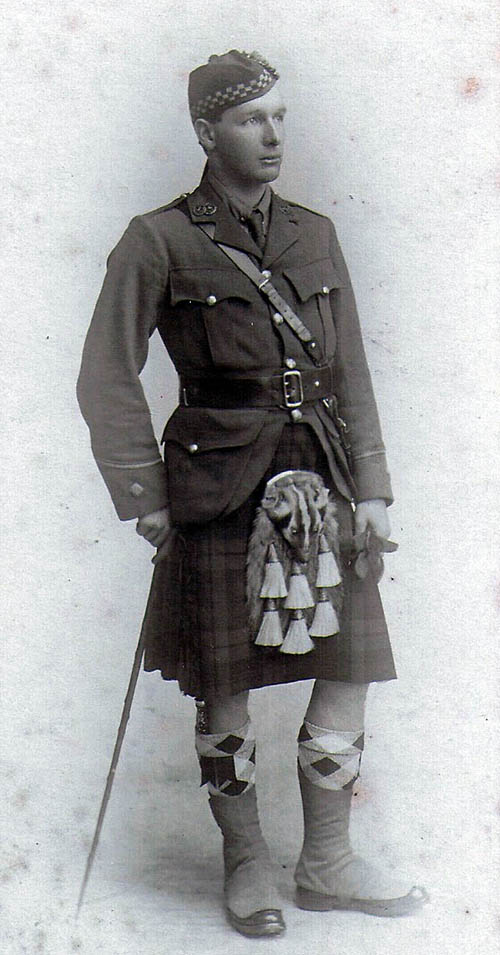Excavation of Edinburgh’s WWI Trenches Begins

Officer William Ewart Gladstone-Millar of the Argyll and Sutherland Highlanders trained in the “Dreghorn sludge”.
At almost 100 years old, excavation and examination work has begun on Dreghorn Barrack’s WWI trench training system by world renowned archeologists. Originally dug by the 16th Battalion The Royal Scots before they served in France, the trenches provided the only experience Scots soldiers had of trench warfare before arriving on the Western Front.
Experts are hoping the study will lay bare the secrets of trench design and any methods used to keep up with the initially superior trench-building German forces.
Local historian Lynne Gladstone-Millar, who has been campaigning to save the trenches for ten years, said she was extremely pleased the trenches have been recognised as a place of national significance. Her father, William Ewart Gladstone-Millar was a young officer in the Argyll and Sutherland Highlanders and trained in the ‘Dreghorn Sludge’ before winning the Military Cross during the Great War.
Lynne remembers her father saying: “There was a very specialised kind of mud there. We called it “Dreghorn Sludge’. It caked on to your kilt so that the peats lacerated your chapped knees like knives. It always seemed to be raining , and day in day out, we had to plunge in and out of these trenches, getting soggier and soggier. And then there was the march back to Mortonhall [Edinburgh]. It was not done to complain – among the officers anyway.” Officer Gladstone-Millar was shot in both legs after going over the top at the Battle of the Somme, and crawled his way back to his own lines. He was later awarded the Military Cross after capturing an enemy machine gun nest at the Second Battle of the Marne.
The excavation team – made up of archaeologists from the MoD’s Defence Infrastructure Organisation (DIO), the council and specialists from the University of Glasgow’s Centre for Battlefield Archaeology – will chart the route and condition of the trenches before making recommendations for future management of the site.
Related Posts :
Category: Argyll and Sutherland Highlanders, Royal Scots, Wars and Conflicts, World War One



my father served in the united,states of america navy in w.w.2 he won 6 silver stars during his service. his name is melvin dale watson. after the war he worked with his dad my grandfather harris (pops)watson at m.g.m. movie studios in sound effects. clan watson.thank you glenn watson.
I would like more information about my father’s regiment; the only thing I know is 10th Royal Scots, Ladies from Hell, 1914-1918, a kilted regiment. He lost an eye in a battle somewhere.